
Medicago is a genus of flowering plants, commonly known as medick or burclover, in the legume family (Fabaceae). It contains at least 87 species and is distributed mainly around the Mediterranean Basin, and extending across temperate Eurasia and sub-Saharan Africa. The best-known member of the genus is alfalfa, an important forage crop, and the genus name is based on the Latin name for that plant, medica, from Greek: μηδική (πόα) Median (grass). Most members of the genus are low, creeping herbs, resembling clover, but with burs. However, alfalfa grows to a height of 1 meter, and tree medick is a shrub. Members of the genus are known to produce bioactive compounds such as medicarpin and medicagenic acid. Chromosome numbers in Medicago range from 2n = 14 to 48.

Lolium persicum is a species of flowering plant in the family Poaceae. It is referred to by the common names Persian darnel or Persian ryegrass, and is an annual grass. It has an upright stem, branching from a reddish base, up to 45 cm tall. Its leaves are lower surface glossy, dark green, 6 mm wide.
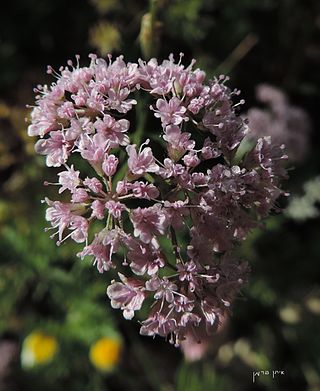
Chaetosciadium is a monotypic genus of flowering plants in the family Apiaceae. Its only species is Chaetosciadium trichospermum. the only species of the genus Chaetosciadium. It is native to Iraq, Lebanon, Syria, Palestine and Saudi Arabia. It is common in Israel.

Helleborus cyclophyllus is a flowering perennial plant in the family Ranunculaceae. It is native to Albania, Bulgaria, Greece, and Yugoslavia. It is similar in appearance to other hellebores found in the Balkan region. It is acaulescent, meaning it lacks a stem with leaves, instead sending up a leafless flower stalk. The green leaves are palmate and basal, spreading at the ground. The flowers are green to yellow-green and 2 to 3 inches in diameter.
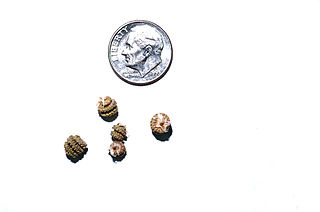
Medicago noeana is a species of flowering plant in the Fabaceae family. It can be found throughout the Middle East. It forms a symbiotic relationship with the bacterium Sinorhizobium meliloti, which is capable of nitrogen fixation.
Umbilicus chloranthus is a species of flowering plant in the Crassulaceae family. It is referred to by the common names green Venus' navel and ombelico di Venere verdastro. It is native to Albania, the East Aegean Islands, Greece, Turkey, and Yugoslavia.

Salvia judaica is a species of flowering plant in the Lamiaceae family. It is a perennial commonly called Judean sage that is native to Mediterranean woodlands and shrublands, with violet flowers blooming from April–June.
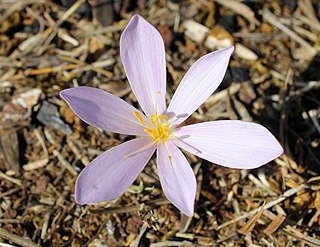
Colchicum micranthum is a species of flowering plant in the family Colchicaceae. It is native to Turkey with nearly white flowers barely 2 cm (.75") tall. It produces a series of blooms throughout the fall. The leaves follow the flowers, and are usually 3–5 in number.
Clypeola elegans is a species of flowering plant in the family Brassicaceae. It is native to Iran, Transcaucasia and Turkey.
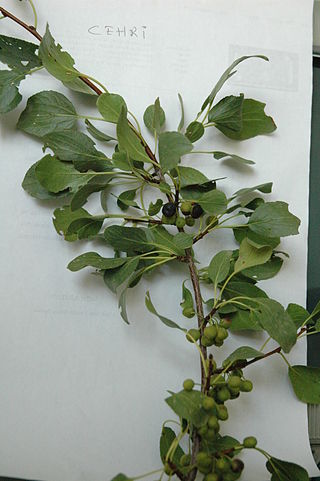
Rhamnus petiolaris is a species of flowering plant in the family Rhamnaceae. It is native to Iraq, Lebanon, Syria, and Turkey.

Salvia microstegia is a herbaceous perennial plant in the family Lamiaceae. It is native to Israel, growing on Mount Hermon. The plant has white or pale violet flowers, blooming from June to September.
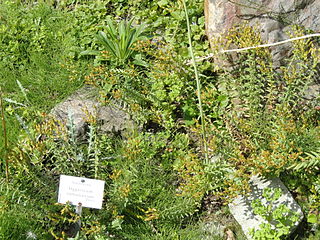
Hypericum rumeliacum is a species of flowering plant in the family Hypericaceae, native to southeastern Europe.
Cotoneaster granatensis is a species of flowering plant in the family Rosaceae that can be found in Algeria, Morocco, Spain and Tunisia. It was described in 1836.
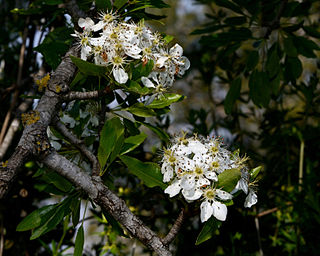
Pyrus syriaca is a deciduous tree in the Rosaceae family. It is referred to by the common name Syrian pear. It is the only pear species which grows in the wild in Lebanon, Turkey, Syria, Israel and Palestine.

Papaver rupifragum is a species of flowering plant in the poppy family, Papaveraceae. It is native to Morocco and Spain.
Astragalus siliquosus is a species of milkvetch in the family Fabaceae.

Teucrium aroanium is a species of flowering plant in the family Lamiaceae. It is endemic to Greece.
Hypericum pubescens is a perennial herb in the Hypericaceae family. It is in the section Adenosepalum.

Crocus carpetanus is a species of flowering plant in the Iridaceae family. It is native to Portugal and Spain.
Asperula breviflora is a species of flowering plant in the family Rubiaceae. It was described in 1849 and is endemic to Syria.















